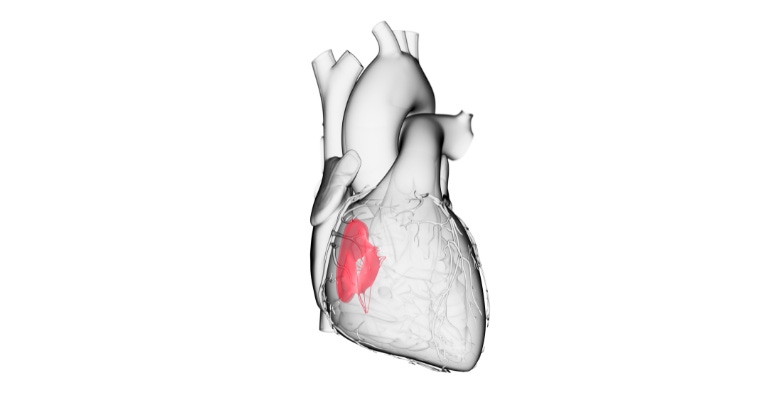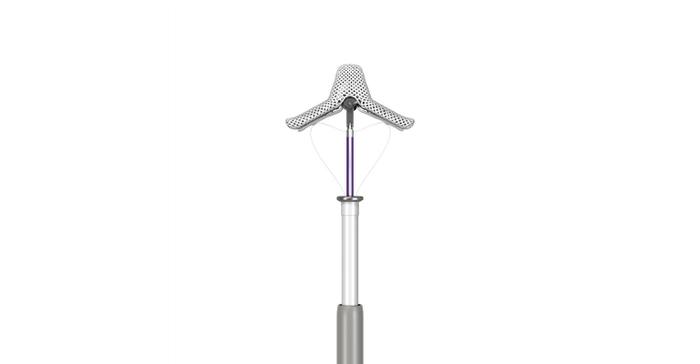New data debunks traditional thinking that patients with pacemakers may not be eligible for or respond to tricuspid transcatheter valve repair.
June 10, 2022

While Abbott's nutrition business continues to face negative press related to its baby-formula plant, the company's medical device business has been pouring out impressive data at recent cardiovascular conferences. This week, Abbott presented research that shows, for the first time, that patients with pacemakers may benefit from tricuspid transcatheter edge-to-edge repair (TEER) therapy using the TriClip device.
Patients with tricuspid regurgitation (TR) who are candidates for transcatheter repair commonly have a pacemaker lead across the tricuspid valve. Combined outcomes from the TRILUMINATE and bRIGHT prospective, single arm, multi-center trials examined whether TR patients previously implanted with a pacemaker lead can benefit from the TriClip device and is the first report focusing on this group. In patients with TR and a pacemaker lead across the tricuspid valve, the following 30-day results of the TriClip and TriClip G4 TEER systems were demonstrated:
High rate of implant (98%) and acute procedural (91%) success
At least a two-grade TR reduction in 64% of patients
Life-changing clinical improvements including 69% of patients achieving NYHA Functional Class I/II, an improvement by 57% from baseline of 12%, with a marked 19-point improvement in Kansas City Cardiomyopathy Questionnaire (KCCQ) score (a self-assessment of symptoms, physical and social limitations, and quality of life in patients with heart failure)
The data was presented at TVT: The Structural Heart Summit, the annual meeting hosted by the Cardiovascular Research Foundation, this week in Chicago.
"This late-breaking data debunks traditional thinking that patients with pacemakers may not be eligible for or respond to tricuspid TEER therapy," said Georg Nickenig, MD, professor and chair of the Heart Center at University Hospital Bonn, Germany. "The findings continue to demonstrate TriClip's ability to reduce TR and improve quality of life in a broad range of anatomies."
The meeting comes on the heels of EuroPCR in May, where Abbott presented real-world outcomes from the TriClip bRIGHT study showing that the TriClip and TriClip G4 TEER systems significantly reduce TR and substantially improve quality of life across a wide range of anatomically diverse patients.
One-Year results from the Abbott MitraClip EXPAND study
The global EXPAND study is the largest contemporary, real-world study of MitraClip NTR/XTR that used an independent echo core lab and clinical events committee. The analysis of one-year clinical and functional outcomes demonstrates the benefit of MitraClip in secondary mitral regurgitation (MR) patients both within the eligibility criteria for Abbott's COAPT trial – which studied symptomatic heart failure patients with moderate-to-severe or severe secondary MR – and outside COAPT eligibility, including patients with moderate at baseline MR and patients with advanced heart failure. The data across all patient groups through one year showed:
Significant MR reduction to ≤1+ MR (81.3%-97.2%)
Improvements in New York Heart Association (NYHA) class (a classification of functional limitations resulting from cardiac disease) and quality of life from baseline
Comparable all-cause mortality and heart failure hospitalization rates
Gilbert Tang, MD, surgical director of the structural heart program at Mount Sinai Health System and a professor of cardiovascular surgery at Icahn School of Medicine at Mount Sinai, explained that doctors have been using the eligibility criteria from Abbott's COAPT trial to identify heart failure patients with secondary MR who would benefit from MitraClip treatment.

"The real-world findings from this study show that excellent MR reduction and one-year outcomes were achieved by MitraClip not only in COAPT-like patients but also in a wider group of patients outside the COAPT criteria, meaning physicians may be able to help even more people with secondary MR. It'll be interesting to continue following the progress of these heart failure patients after MitraClip therapy."
Abbott also presented at TVT outcomes from the global EXPAND study supporting the MitraClip therapy in both women and men, as well as hemodynamic results from the multi-center, international, single arm, investigational Portico NG study evaluating the safety and effectiveness of the Navitor transcatheter aortic valve implantation system by valve size in patients with severe, symptomatic aortic stenosis at high or extreme surgical risk.
About the Author(s)
You May Also Like




